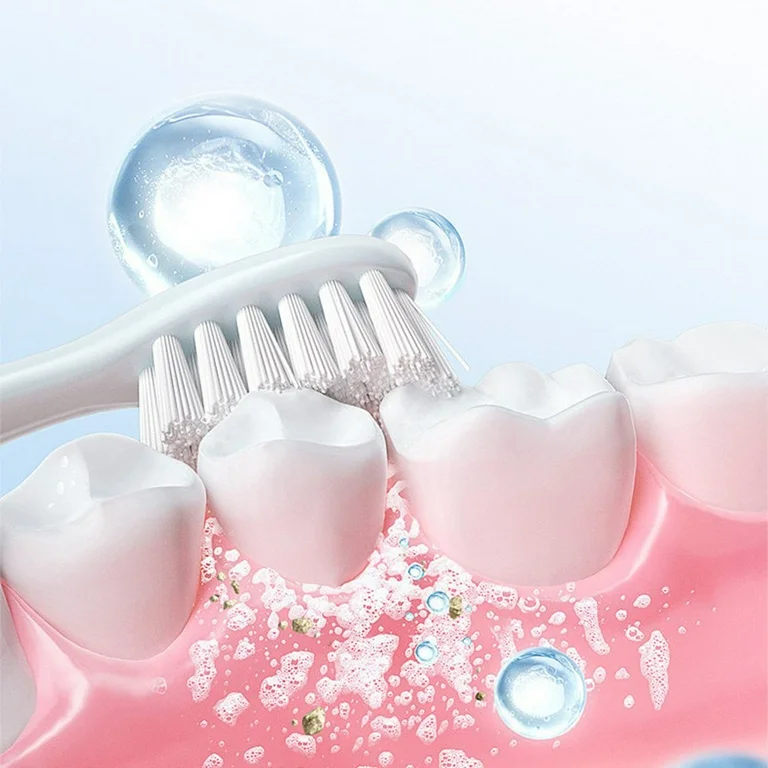
Debunking Toothpaste Color Myths: What Those Stripes Really Mean
Introduction to Toothpaste Color Myths
In the realm of personal care, toothpaste is a staple. Myths about toothpaste color have spread far and wide. One such myth claims that stripes on tubes reveal secret information. People believe these colors speak to the natural or chemical nature of the product. But let’s get to the truth. The color on your toothpaste tube says nothing about its contents. This myth has circulated online, causing unnecessary confusion. The color code story is simply not true. These stripes have no hidden meaning. The belief in a color code is a myth, pure and simple. In this blog, we will explore these myths and uncover the facts. We’ll show you how to understand what’s really in your toothpaste. Let’s start by understanding where this myth comes from and why it’s false.
Understanding the Toothpaste Color Code Myth
The toothpaste color code myth is fascinating, but utterly untrue. Somewhere along the line, the myth suggested that a colored stripe on toothpaste tubes contained secret codes about the product’s contents. According to the legend, green stripes meant all-natural, blue was natural with some medicine, red indicated a mix of natural and chemical, and black meant a chemical concoction. This viral rumor has been a source of misinformation and confusion.
In reality, the color of the stripe on toothpaste tubes has no connection to the composition or quality of the toothpaste inside. The toothpaste color myth assumes that there’s a hidden indicator which simply does not exist. Notably, the manufacturing process of toothpaste tubes utilizes these colored marks, but they serve a completely different purpose. They are not an under-the-radar health rating system.
The USDA organic labeling process is meticulous and has strict criteria. This also debunks the color code theory, as organic certification by the USDA would not rely on such obscure methods to convey product information. Transparency in labeling is key, and no color stripe on a toothpaste tube can communicate what can be clearly written in an ingredient list.
So where did this toothpaste color myth start? It’s challenging to pinpoint the origin, but what’s important is to end the circulation of this myth. It distracts consumers from reliable ways to assess product quality. Recognizing the truth about these myths leads to better-informed choices in selecting personal care products. Simply put, those stripes are just stripes, with no hidden meanings or messages.

The Truth About Toothpaste Stripes and Ingredients
The stripes on toothpaste tubes are a hot topic. Some say they hide ingredient secrets. That’s not true. Let’s clear this up once and for all. Toothpaste color stripes are simply part of manufacturing. They help machines know where to cut the tubes. That’s it. They are not secret codes for ingredients.
Toothpaste ingredients are on the label. That’s where you can learn what’s inside. This includes chemicals, natural elements, and everything else. Ignore the stripes. Read the label for the real story. Toothpaste with USDA Organic labeling will list its organic content clearly. This is the transparent way to know what you’re using.
Don’t let myths misguide you. Trust what’s proven and printed right on your toothpaste tube. Choose brands that value honesty and give you clear information. This will make sure you know exactly what you’re putting in your mouth. Remember, no color code can replace factual labeling.
USDA Organic Labeling and Toothpaste
When choosing toothpaste, USDA Organic labeling is a key factor. Many toothpastes claim to be ‘natural’ or ‘organic,’ but only those with USDA Organic labeling have met strict standards. Here’s what you need to know about USDA Organic labels when it comes to toothpaste.
First, a toothpaste with a USDA Organic label means it’s made of at least 95% organic ingredients. These ingredients are grown without prohibited practices like genetic engineering. They must also be free of synthetic substances, ensuring a clean and natural product.
The USDA has three organic label categories. ‘100% Organic’ is the highest standard, followed by ‘Organic,’ where 95% or more of the ingredients are organic. The ‘Made with Organic’ label is for products with at least 70% organic ingredients.
For a toothpaste to be certified, it must also be produced with approved substances only. USDA certifying agents check on these to make sure they follow all organic regulations.
It’s crucial to choose a toothpaste brand that values honesty in labeling. Such brands don’t need color stripes on their tubes. They clearly list their ingredients and organic certification on the packaging. This shows that they’re open about what goes into their toothpaste.
So, remember that toothpaste color has no tie to the toothpaste’s content. Trust the certification and the ingredient list. That’s how you’ll know if your toothpaste is truly organic and right for you. Always choose brands that provide this level of transparency.

The Role of Color Marks in Packaging
Color marks, or ‘eye marks’ as some call them, have a practical purpose in packaging. They are not, contrary to popular myths, indicators of what’s inside your toothpaste. Let’s break down their real function.
Color marks are used in the manufacturing process to guide packaging machines. These marks help to ensure that the machines accurately cut and seal the packaging. They appear on a range of products, from toothpaste tubes to milk cartons.
The marks are typically darker than the packaging material. This contrast allows sensors to detect them easily. It has nothing to do with the ingredients or the quality of the product inside. They simply signal where a machine should perform a specific action.
The color chosen for these marks is typically arbitrary. It varies from one manufacturer to another. The choice is based on equipment needs and not on any kind of code for consumers.
In summary, these color marks are a tool for efficiency in manufacturing. They have no bearing on the toothpaste color or its contents. Using them as a means to judge a product’s quality or composition is misguided.
Next time you pick up a tube of toothpaste, remember, the stripes are all about packaging. They help create the products you use every day, but they don’t reveal any secrets about what’s inside. It’s essential to look beyond the packaging strips. Instead, focus on the information that truly matters – the ingredient list and any organic certification labels.

How to Identify What’s Really in Your Toothpaste
Choosing the right toothpaste involves knowing what’s inside the tube. Forget the color stripes myth. Here’s how you can identify the true contents of your toothpaste:
- Read the Ingredient List: The most direct way is to look at the ingredient list on the packaging. It details all the substances used, from fluoride to herbal extracts.
- Check for Certifications: Look for official certifications like USDA Organic. This shows that the toothpaste meets high organic standards.
- Look for Transparency: Brands that clearly explain their ingredients are trustworthy. They will provide comprehensive information about what’s inside.
- Contact the Manufacturer: If you’re unsure, contact the toothpaste company. Ask them about the ingredients and their sourcing.
- Research Online: Do some online research about the ingredients listed. This helps you understand their benefits and possible drawbacks.
- Avoid Misinformation: Stay clear of myths and base your choices on facts. Don’t be swayed by rumors or unverified online posts.
- Trust Reputable Sources: Rely on information from established and reputable health sources. These often include dental associations and health organizations.
In conclusion, knowing what’s in your toothpaste comes down to reading labels and trusting reliable information. Ignore the stripes, focus on facts, and choose toothpaste that is clear about its ingredients.
Reasons to Choose Transparent and Honest Toothpaste Brands
Choosing a toothpaste brand that’s open and honest is important. Here’s why:
- Ingredient Transparency: Honest brands list every ingredient clearly. This helps you know what you’re using.
- No Hidden Surprises: With transparent labeling, there are no hidden chemicals. What you see is what you get.
- Certification Evidence: Trustworthy brands show USDA Organic or other certifications. This means they meet high standards.
- Safer Ingredients: Brands that value transparency often use safer, more natural ingredients. This is better for your health.
- Consumer Trust: When a brand is open about its products, it builds trust. You feel more confident in your choices.
- Support Ethical Practices: Companies that are honest tend to support fair and ethical manufacturing processes. By choosing them, you support these practices too.
- Better Environmental Impact: Transparent brands often care about the environment. They may use sustainable ingredients and packaging.
Remember, a brand worth your loyalty will provide all the information you need upfront. This ensures you make a well-informed decision for your oral health. Only choose brands that are forthcoming with their information. You deserve to know exactly what goes into the products you use every day.

Conclusion: The Importance of Reading Labels over Believing Myths
In summing up, the legend about toothpaste color stripes is untrue. It’s a myth we must forget. Understanding what’s in toothpaste is vital for oral health. Reading labels, not myths, is the way to do this.
Forget color codes on tubes. They are just a packaging tool. Instead, look for real evidence of quality. This includes ingredient lists and organic certifications.
USDA Organic labels matter. They mean strict standards are met. Pick toothpaste that shows this label. Then, you know the ingredients are truly organic.
Go for brands that are honest on their labels. They tell you exactly what’s inside. With transparent information, you make better choices.
We’ve shown that the color of toothpaste tubes is just for manufacturing. It’s not a secret code for ingredients. So, always read the label. Trust the facts that are clearly given to you by the brand. This guarantees that you put the right toothpaste in your cart, and in your mouth.
Choose toothpaste that values transparency. Companies that list ingredients clearly are your best bet. They help you stay informed and safe.
In conclusion, skip the myths. Trust labels that show all the details. Your oral health is too important for anything less.

